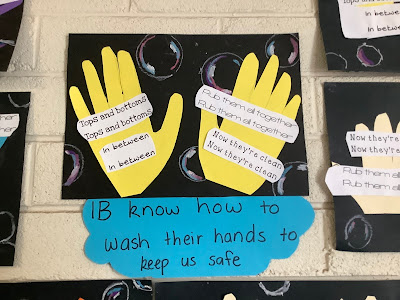Lesson Background:
Our spelling word of the week was "glow" this week, so we spent the week researching fireflies. We watched many videos, read many books and created our own book. We created these artworks using the amazing idea from this website, with just a few changes: http://kathy-angelnik.blogspot.com/2015/06/glow-in-dark-firefly-art-lesson.html
Lesson Materials (per student):
1 jar template on white A4 paper (I just used Google images)
Blue, purple and yellow dye (I used Kindergarten fun dye)
Silver and gold texta
a small blob of white paint
a cotton bud
1 black sharpie
1 lead pencil
1 orange texta
gold glitter glue
a paintbrush for each of the inks and the glitter glue
Lesson Steps:
1. We drew the fireflies onto the jar template with a circle around each, with me demonstrating out the front.
2. We used the purple ink to paint the jar lid, the blue ink to paint around the fireflies, and the yellow ink to paint inside the firefly circles and over the fireflies (warn the children not to paint the yellow too near any big blobs of blue ink- use a tissue to mop up any pooling blue ink first).
3. We used the purple ink to make a few shadows in the blue jar, and the blue ink to make a few shadows in the purple lid.
4. We waited until the ink was dry, then used the black sharpie to colour the fireflies' heads and outine the rest of their bodies.
5. We used the orange texta to colour the fireflies' bottoms.
6. We used the gold and silver pens, and the cotton bud dipped in white paint to dot circles of different sizes all over the blue.
7. We covered over the blue with a layer of glitter glue.
Student Artworks:
 |
| By Olive |
 |
| By Immy |
 |
| By Emma |
 |
| By Sera |
 |
| By Lorcan |
 |
| By Damon |
 |
| By Isabel |












































